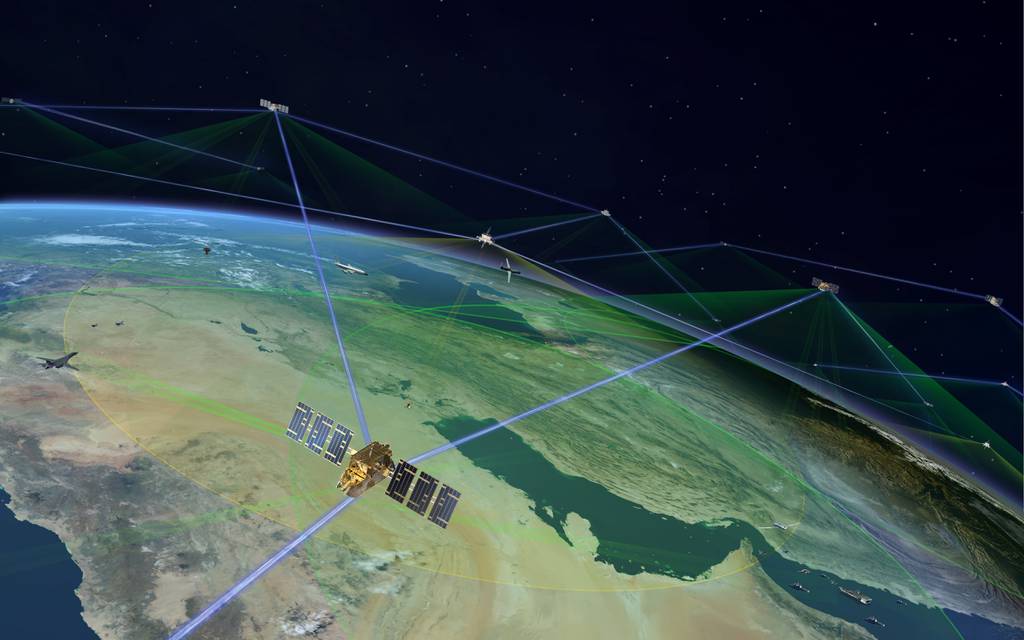WASHINGTON — The Space Development Agency demonstrated the ability to connect its satellites to radios on the ground through a signal known as Link 16, showing the potential for in-orbit sensors to network with military systems operating in multiple domains.
The agency conducted demonstrations from Nov. 21 to 27, transmitting signals from its satellites in Low Earth orbit — about 1,200 miles above Earth — to a test site on the ground, SDA said in a Nov. 28 statement.
According to SDA Director Derek Tournear, the demonstrations are a significant milestone for the agency, which is developing a space-based Transport Layer made up of small satellites and sensors designed to provide global connectivity for military users.
“I can’t underscore enough the significance of this technical achievement as we demonstrate the feasibility of the Proliferated Warfighter Space Architecture and its ability to deliver space-based capabilities to the warfighter over existing tactical data links,” SDA Director Derek Tournear said in the statement.
The Defense Department established SDA in 2019 to build a constellation of low Earth orbit transport and missile tracking satellites on rapid timelines, augmenting constellations of large spacecraft with hundreds of small, relatively low-cost satellites. Those satellites make up what SDA calls its Proliferated Warfighter Space Architecture.
Link 16 is a tactical communications system that U.S. forces, NATO and international allies rely on for real-time data exchange. During the demonstration, SDA used three satellites from its Transport Layer, all built by Denver-based York Space Systems. The Air Force’s 46th Test Squadron at Eglin Air Force Base, Fla., supported the mission from the ground.
The satellites used on-board radios to send signals to a test site located “within the territory of a Five Eyes nation,” SDA said, declining to disclose which country it partnered with for the effort. Besides the U.S., other members of the Five Eyes intelligence alliance include Australia, the U.K., Canada and New Zealand.
SDA’s goal had been to conduct the demonstration over U.S. air space. However, the Federal Aviation Administration requires certification to use Link 16 to broadcast signals from space through the U.S. National Airspace System, and has not yet granted approval for SDA’s systems. So, the agency opted to perform the test over international waters.
“SDA’s requirement remains to test over U.S. air space to fully demonstrate the feasibility of the [Proliferated Warfighter Space Architecture] and its ability to deliver fire control information to the warfighter over existing tactical data networks,” the agency said.
The satellites that enabled the Link 16 demonstration were part of SDA’s first batch of spacecraft, dubbed Tranche 0, which includes 19 transport satellites and eight for missile tracking. Tranche 1 satellites are slated to start launching in 2024 and will feature 126 transport and 35 tracking spacecraft.
Courtney Albon is C4ISRNET’s space and emerging technology reporter. She has covered the U.S. military since 2012, with a focus on the Air Force and Space Force. She has reported on some of the Defense Department’s most significant acquisition, budget and policy challenges.








